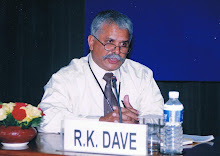The list of experts who participated in the “Brian storming session on telemedicine (Telehealth)” organized by RESPECT on 15th Dec 2011 is given as below.
1. Mr. Rajesh Kishore, IAS, Principle Secretary (Health and family Welfare), Government of Gujarat
2. Dr R.K.Dave (Adviser to GSDMA, GoG)
3. Prof. K.V. Ramani, IIM- Ahmadabad
4. Mr. Ravi Saksena (ISRO)
5. Mr. B.S. Bhatia (ISRO)
6. Dr. Anil Ved
7. Dr. Tejas Prajapati
8. Dr Shrikant Parik
9. Mr. A.K. Gupta (DDK)
10. Mr. J.K.Chandira (DDK)
11. Ms Monika (IIPA)
12. Ms Minakshi Singhavi (AIR)
13. Mr. Rama Subramaniam
14. Mr. Shard Raval (x-GoG)
15. DIG (CRPF)
16. Representative from GEC (Gujarat Ecology Commission)
17. Representative from Selby Hospital
Recommendations Issued:
1. National Health Policy, with short term and long term goals defined clearly should be the driver for defining, designing and implementing heath service delivery system for rural areas.
2. Health Information Management system, currently being used by the state Government of Gujarat is an effective monitoring tools for managing health services effectively.
3. “Telehealth” has a defined space in state health system for bridging “quality health service delivery gap” between rural and urban population.
4. Telehealth system can be divided into two separate sub-system
a. Telehealth system for preventive services – community based Telehealth service centers
i. CSC (Community service Center), DIT, GoI, may integrate “Preventive Telehealth service facilities”. The existing CSC entrepreneur can be trained on basics and the procedures to be followed.
ii. SOP (Standard Operating procedure) can be design and put into place at each CSC describing required guidelines.
iii. Community Telehealth center will work in both asynchronous as well as synchronous mode with voice and data (email, documents, images etc) service only.
b. Telehealth system to support “intervention” by medical specialist – PHC based service centers
i. SOP to be prepared and put into place for Telehealth services at PHC
ii. Telehealth service at PHC will support both asynchronous as well synchronous consultations.
iii. Telehealth service center at PHC will have blue tooth unable sensors for ECG, BP, HR, and Oximeter.
iv. Telehealth center will have broadband internet connectivity, scanning, copying, faxing and FTP facility
v. Telehealth center at PHC will have desktop VC facility.
5. Each sub-system needs to have a defined architecture planning and policy guidelines for operation and management. Following three components need to be clearly defined for both the categories of Telehealth delivery stated above-
a. Clinical aspect
b. Technology &
c. Administrative
6. Based on research statics – one in five cases needs real time consultation, the Telehealth system can work in asynchronous mode majority of time. The emerging Telehealth system should use “hybrid configuration” i.e. voice data and voice+data+video planned meticulously based on the availability of commercial bandwidth resources.
7. Private health facility centers follow specific business mode and may will extend their reach to remote rural location based on ROI.
8. Health policy may consider including UHSOF (Universal Health Service Obligation Fund) with mandatory contribution from private health service operators / providers in line with USOF working in telecom sector (DoT, GoI).



No comments:
Post a Comment